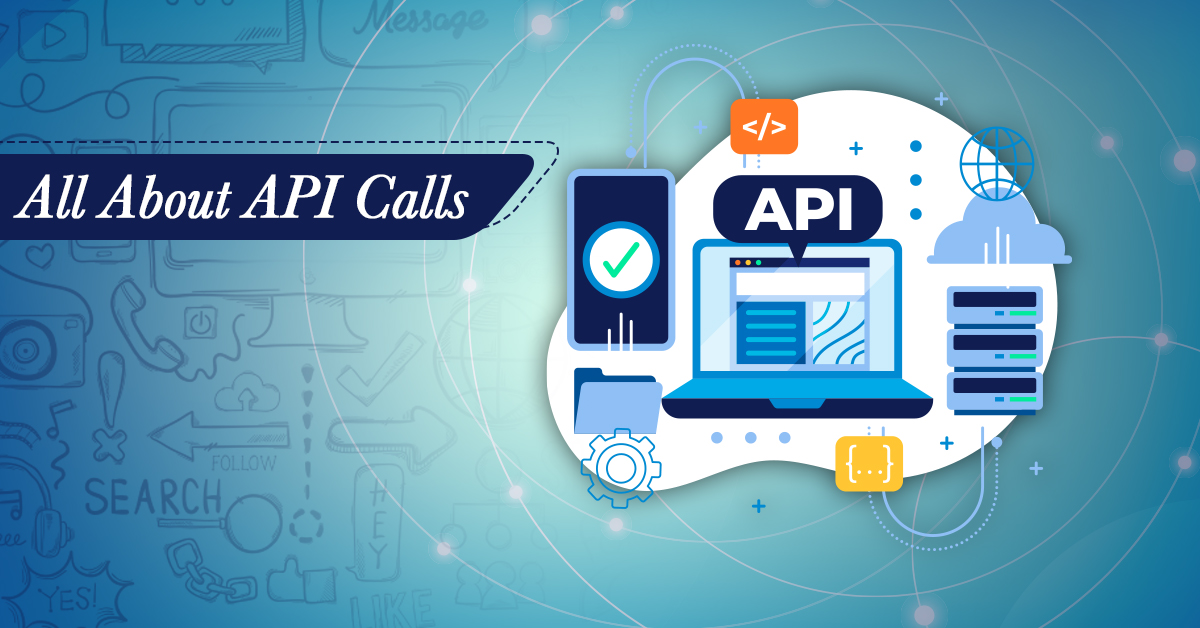Before diving into what an API call is, let’s begin organically knowing about what an API is so that people who are not aware may get acquainted.
What is API?
API abbreviated as Application Programming Interface is a link between two computers or programs. It’s a type of software interface that allows other applications to interact with it. A document or standard that defines how to construct or use a connection or interface is known as an API specification.
To better understand it, consider this analogy: a human being requires communication accumulated with thoughts to convey information, which can be written or spoken; likewise, web apps, computers, and apps require a user interface that includes a screen, menu, graphical elements, mouse, and keyboard.
APIs are utilized on every website, some individuals may not be aware of this, but they would be astonished if they were. Take, for example, any well-known travel website where you can find various airlines such as Emirates, Air Asia, Singapore Airlines, and so on. How do you think it is possible to book tickets from a traveling website of a specific airline that has its site? It is possible because APIs are shared. Similarly, popular chat functions like Troop Messenger can be found in web apps or apps like banking, dating, food delivery, and so on. This is because the apps used Troop Messenger chat APIs to provide chat functionality to its consumers rather than constructing it themselves. Don’t get confused, of course, Troop Messenger is known for being a self-hosted chat server, it can also be utilized for other main distribution models like SaaS, chat APIs, and so on.
What is an API call?
The call occurs when an application sends a request to an API, which then retrieves the desired data from an external server or program and returns it to the client, is called an API call.
Making an API call is as simple as adding an endpoint to a URL and sending a request to a server. For example, when you use a browser to log into an app or ask a question, you are making an API call.
API calls are made to a Unique Resource Identifier (URI). A URI identifies a resource such as an application, email contact, website, server, or even a physical item that could be labeled as a resource.
Making a call to an API involves the following steps:
- Calling the API using it’s Uniform Resource Identifier (URI), specifying a request verb, headers, and optionally, a request body;
- On validating the request, the API makes a call to an external program for data
- The API receives a response from the external program
- And the API returns the data to the original requesting program.
The URI for web APIs is usually a Uniform Resource Locator (URL) which is a sort of URI that is used to identify Internet destinations such as a website or a server. The application layer protocol, such as HTTP, must be included in a URL. HTTP is used by most online APIs, hence it’s included in the API endpoint’s URL.
API Calls Vulnerabilities
Since it is a digital world and your data is an asset, it is likely or highly prone to attack by hackers. Do you know attackers can use API calls to attack APIs?
Denial-of-service (DOS)
Denial-of-service (DoS) attacks try to prevent actual or legitimate users from accessing websites or applications by overloading them with bogus network traffic. Attackers flood an app or API endpoint with unnecessary web requests, overwhelming servers, and disrupting service.
API calls’ exploitation
Attackers can use API calls to their advantage with an intention to exploit the weakness in the API to deceive the server into releasing the data which is not supposed to, performing in ways it wasn’t built for, or granting them illegal access.
These and other assaults might have a severe impact on a company that provides API services.
Solutions to secure APIs
The following are some of the applied and proven solutions to secure API
- Never send data from an API to an endpoint without first verifying it.
- Use a web application firewall to protect your website. Ascertain that it can comprehend API payloads.
- Rate limitation can help avoid denial-of-service attacks by establishing a threshold beyond which further requests will be denied.
- Before they’re made publicly available, APIs typically contain passwords, keys, and other data that must be deleted.
- Keep a list of all API endpoints in production up to date.
- Verify that APIs only return as much data as is required to perform their task.
Conclusion
I hope after going through the information above you will embark on a position of understanding the relevance of API calls. And you can begin reviewing several APIs and help determine which ones best suit your app and users.


